Norwegian c-store operator Deli de Luca has one of the most innovative and striking c-store formats in the world. That's why we named it one of the best specialist retailers in our "World's Finest Food Retailers" survey last year and why, when we visited Oslo recently, we couldn't pass up the opportunity to find out more.
MD Adriano Capoferro founded Deli de Luca in January 2003 with four ex-colleagues from local convenience chain 7-Eleven. They shared a collective dream: to revolutionise the c-store business. Terje Bergh, store operations director, recalls: "In 2003, what we saw across Europe and here was that c-stores, supermarkets and forecourts were very similar, with the same products in each market."
What they came up with was an upmarket concept influenced by New York delis, Marks & Spencer and Starbucks that may not be as Italian as it sounds, but has proved hugely successful financially.
Indeed, Deli de Luca moved into the black within its second year of trading and is now on track to generate £26.9m in sales by the end of the year. Last month, Norway's leading grocery retailer NorgesGruppen paid £22m for a controlling interest, valuing the 22-store chain at £35m - not bad for just three years in business. So what's its secret?
Design and layout clearly plays a huge part. Vesna Milkovic, the design director, has developed stores that are easy to shop in, have a warm café-like atmosphere and good in-store theatre. Freshly prepared foods are the star of the show. Bergh says: "We realised that there was an opportunity to do something special based not on c-stores but food markets and cafés."
Catering to young urban dwellers in and around Oslo, stores are a maximum of 1,000 sq ft and located where there is likely to be particularly high footfall. Most are open 24 hours a day and come in one of three primary formats.
The city centre format focuses primarily on convenience foods, drinks and confectionery and features seating space to build on the café element; the residential format is similar but devotes more than average floorspace to top-up shopping; while the shopping centre format is a stripped down version of the city centre format.
Every store features a series of modules, which each represent a particular product group. Throughout the store, the shelves are stocked with premium foods, such as sushi, pasta, Asian foods, exotic pastries, cakes and Italian gelati. Fresh prepared foods and beverages accounted for 50% of profits in the company's first year. That figure is now 65% and rising.
Traditional top-up ambient goods are not a major focus and constitute only 15% of floorspace on average, says Bergh. "This year we are pushing them back to make room for higher-margin fresh food products. It is a better competitive ground."
Recent additions to the line-up include hot Belgian waffles, smoothies made to order and self-serve fruit and salad bars. Bergh says: "The consumer is really willing to pay for quality. For example, we took an existing fresh pasta line and sourced it from a better but more expensive vendor. By improving the quality, we have been able to increase our margins."
A young, enthusiastic workforce is another vital element in the company's success. "Every employee meets one of us (the founders) before they go out to work in the stores," Bergh says. "We tell them about our dream, why it is important and what their role is in it. We do everything we can to help people develop. Of the last four stores we have opened, three of the franchise holders are former employees."
The company's competitors have been scrambling to react. 7-Eleven has increased its fresh foods offer recently, as have some of the others. Product development director Thor Johansen is not unduly worried. He says: "It won't work. They are copying, but they can't do it well. They don't even know why they are doing it."
Bergh and Johansen also say that Spar Norway tested an urban-oriented concept store in Stavanger but failed to replicate their success: "Everything was wrong about it: the location was wrong and the products were wrong."
So what is next? On the domestic front, Capoferro says stores will be rolled out across the next three largest Norwegian cities. He also plans to upgrade its basic format and expand into the petrol forecourt sector. Expansion to other European countries is also on the cards, says Bergh: "What we still see across Europe is that the mix of convenience and café is missing. It is possible for us to do it."
In the short term they are eyeing Stockholm and Copenhagen, where local partners can easily be found. Bergh thinks the UK and Ireland are also attractive opportunities. So could there be a route of entry with NorgesGruppen, which operates Spar Supermarkets in Norway?
Unlikely, says Capoferro pointing out that Spar is a very different entity in the UK. But that doesn't mean that there aren't other potential partners, he says. Watch this space.n
MD Adriano Capoferro founded Deli de Luca in January 2003 with four ex-colleagues from local convenience chain 7-Eleven. They shared a collective dream: to revolutionise the c-store business. Terje Bergh, store operations director, recalls: "In 2003, what we saw across Europe and here was that c-stores, supermarkets and forecourts were very similar, with the same products in each market."
What they came up with was an upmarket concept influenced by New York delis, Marks & Spencer and Starbucks that may not be as Italian as it sounds, but has proved hugely successful financially.
Indeed, Deli de Luca moved into the black within its second year of trading and is now on track to generate £26.9m in sales by the end of the year. Last month, Norway's leading grocery retailer NorgesGruppen paid £22m for a controlling interest, valuing the 22-store chain at £35m - not bad for just three years in business. So what's its secret?
Design and layout clearly plays a huge part. Vesna Milkovic, the design director, has developed stores that are easy to shop in, have a warm café-like atmosphere and good in-store theatre. Freshly prepared foods are the star of the show. Bergh says: "We realised that there was an opportunity to do something special based not on c-stores but food markets and cafés."
Catering to young urban dwellers in and around Oslo, stores are a maximum of 1,000 sq ft and located where there is likely to be particularly high footfall. Most are open 24 hours a day and come in one of three primary formats.
The city centre format focuses primarily on convenience foods, drinks and confectionery and features seating space to build on the café element; the residential format is similar but devotes more than average floorspace to top-up shopping; while the shopping centre format is a stripped down version of the city centre format.
Every store features a series of modules, which each represent a particular product group. Throughout the store, the shelves are stocked with premium foods, such as sushi, pasta, Asian foods, exotic pastries, cakes and Italian gelati. Fresh prepared foods and beverages accounted for 50% of profits in the company's first year. That figure is now 65% and rising.
Traditional top-up ambient goods are not a major focus and constitute only 15% of floorspace on average, says Bergh. "This year we are pushing them back to make room for higher-margin fresh food products. It is a better competitive ground."
Recent additions to the line-up include hot Belgian waffles, smoothies made to order and self-serve fruit and salad bars. Bergh says: "The consumer is really willing to pay for quality. For example, we took an existing fresh pasta line and sourced it from a better but more expensive vendor. By improving the quality, we have been able to increase our margins."
A young, enthusiastic workforce is another vital element in the company's success. "Every employee meets one of us (the founders) before they go out to work in the stores," Bergh says. "We tell them about our dream, why it is important and what their role is in it. We do everything we can to help people develop. Of the last four stores we have opened, three of the franchise holders are former employees."
The company's competitors have been scrambling to react. 7-Eleven has increased its fresh foods offer recently, as have some of the others. Product development director Thor Johansen is not unduly worried. He says: "It won't work. They are copying, but they can't do it well. They don't even know why they are doing it."
Bergh and Johansen also say that Spar Norway tested an urban-oriented concept store in Stavanger but failed to replicate their success: "Everything was wrong about it: the location was wrong and the products were wrong."
So what is next? On the domestic front, Capoferro says stores will be rolled out across the next three largest Norwegian cities. He also plans to upgrade its basic format and expand into the petrol forecourt sector. Expansion to other European countries is also on the cards, says Bergh: "What we still see across Europe is that the mix of convenience and café is missing. It is possible for us to do it."
In the short term they are eyeing Stockholm and Copenhagen, where local partners can easily be found. Bergh thinks the UK and Ireland are also attractive opportunities. So could there be a route of entry with NorgesGruppen, which operates Spar Supermarkets in Norway?
Unlikely, says Capoferro pointing out that Spar is a very different entity in the UK. But that doesn't mean that there aren't other potential partners, he says. Watch this space.n


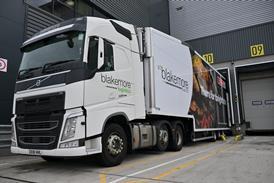

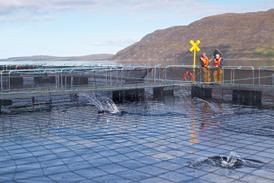
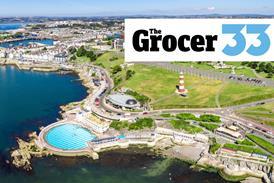
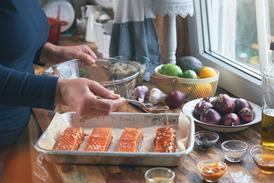





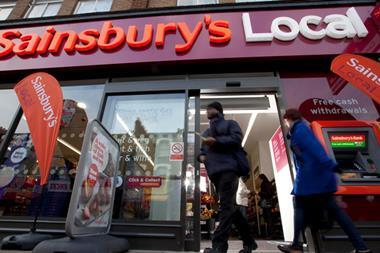
No comments yet